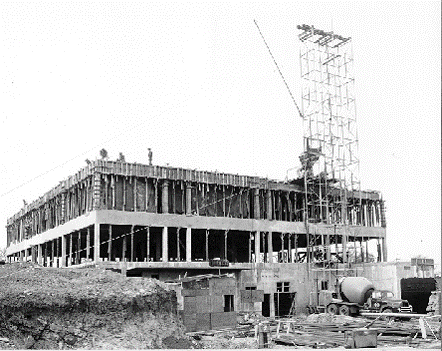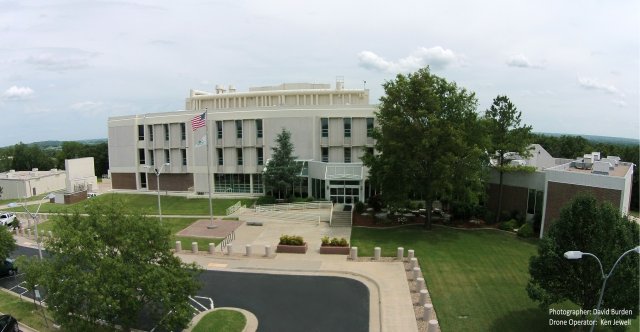Over 50 Years of Groundwater Research at EPA’s Kerr Lab in Ada, Oklahoma
Published September 2, 2021


The rise of factories during the industrial age led to decades of pollution as industries disposed of their waste without regulation, often discharging wastes directly into rivers or open dumps. The Federal Water Pollution Control Act, enacted in 1961, provided for the establishment of several research laboratories to combat increasing water pollution problems. One of these was placed in Ada, Oklahoma. The research facility was named for Robert S. Kerr, a U.S. Senator from the state, in honor of his dedication and concern for the conservation and development of our natural water resources and his pioneering legislation in environmental protection.
Initially scientists at the Kerr Lab provided technical assistance, presented training, and conducted research to solve water pollution problems indigenous to the states of Arkansas, Louisiana, New Mexico, Oklahoma, and Texas. In 1970, the lab’s role was expanded as it became one of fifteen research laboratories administered through the EPA’s Office of Research and Development (ORD). In 1979, EPA designated the Robert S. Kerr Environmental Research Laboratory as its center for groundwater research within the Agency. The lab is now known as the Robert S. Kerr Environmental Research Center (RSKERC).
Started in 1979, EPA’s first groundwater program was a pioneering effort at a time when there was not much known about groundwater or how to research it. Throughout the 1980s, EPA staff at Kerr Lab worked with local and regional colleges and universities to help build their curricula, creating new scientific disciplines to address the growing interest in groundwater research.
EPA scientists at Kerr Lab were the first to recognize the importance of subsurface biodegradation of organic contaminants by naturally occurring microorganisms. They did groundbreaking work on the use of subsurface bioremediation for cleaning up subsurface contamination. They also provided the science underlying most of EPA’s guidance on using monitored natural chemical breakdown processes as a risk management technique. Scientists there were the first to recognize hard-to-treat chemicals at Superfund sites, and their research on permeable reactive barriers has been internationally recognized.
Over the last 50 years, the scientific excellence and research advancements have changed how communities, regions, and the Nation protect and manage its groundwater and ecological resources. Recently, Kerr Lab’s research has become more focused on providing solutions to environmental challenges for which there are no immediate answers.
“The strength of EPA groundwater science has been proven successful by the partnerships formed with local, state, and tribal communities in Oklahoma,” says Dr. Ann Keeley, Division Director of the Groundwater Characterization and Remediation Division, which is headquartered in Ada. “Ninety-five percent of rural America is totally dependent upon groundwater for its water supply, so our efforts have both a local and far-reaching impact.”
Today, EPA scientists at the Kerr Lab conduct research and provide technical assistance in the broad areas of groundwater protection and remediation. Major research initiatives include understanding and expressing mathematically the physical, chemical, and biological processes that control the transport and transformation of contaminants in the subsurface environment. EPA scientists conduct research in characterizing and restoring contaminated groundwater, nutrients and ecosystem restoration, green infrastructure, aquifer recharge, and the transport and fate of contaminants such as PFAS; and they provide technical support to other EPA offices through the Groundwater Technical Support Center. EPA scientists continue to develop models and tools to characterize, monitor, and remediate subsurface contamination to protect our drinking water supply. EPA scientists in Ada are also researching and working collaboratively with other area organizations to address local and regional concerns such as water conservation, the sustainability of water resources, drought contingency planning, and drought resiliency.
As climate change and increased populations continue to put stress on our water supplies, the future holds an increasing need for research related to protection and restoration of groundwater quality and quantity through the development of tools, technologies, public awareness, and education. Because of the Kerr Lab history and its scientists’ experience in groundwater research, it will remain in the forefront of technology development in this area for many years.
Read more
At a Glance: EPA’s Ada, Oklahoma Laboratory
